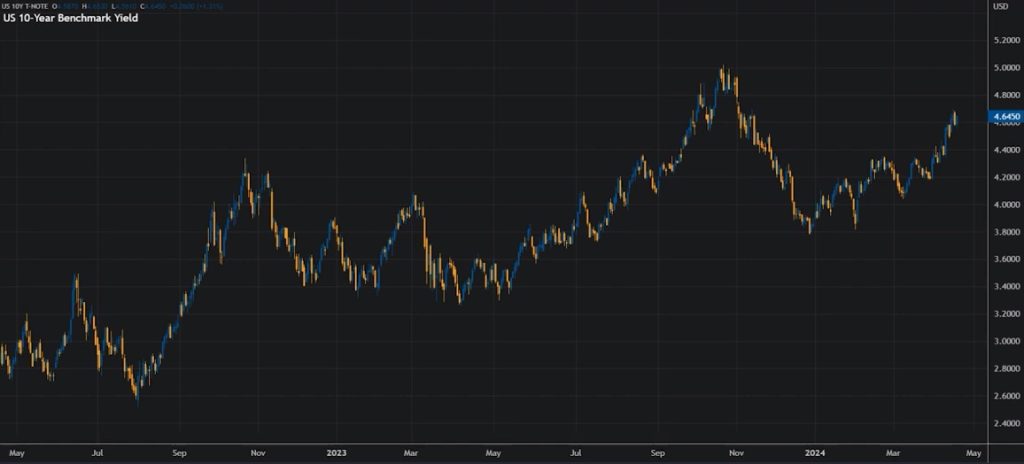
Lately, there’s been talk in the market about the Fed’s stance on rate cuts, with expectations shifting towards delays or even total elimination for 2024.
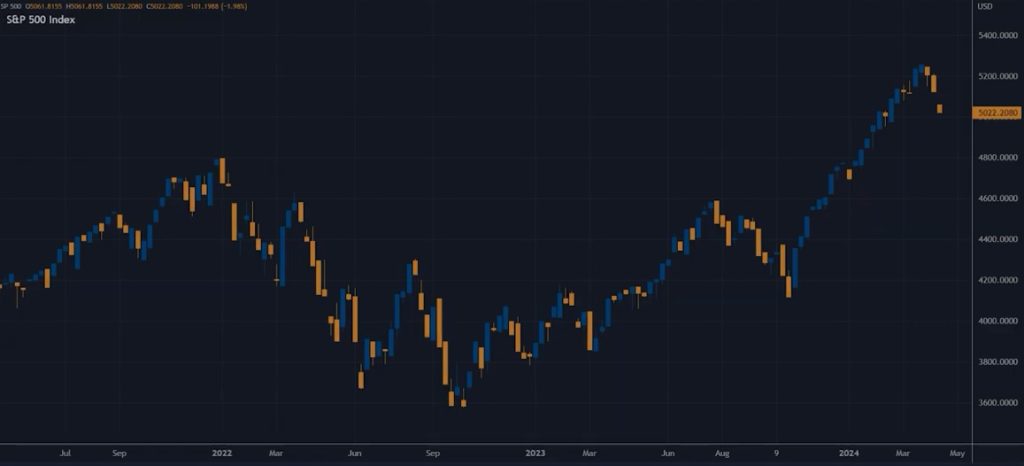
Should Biden’s federal marijuana legalization proposal pass? When analyzing events like these, it’s crucial to consider expected correlations and their impact on other assets versus actual outcomes. For instance, the ten-year Treasury rate started the year below 4%, driven by expectations of numerous rate cuts for 2024.
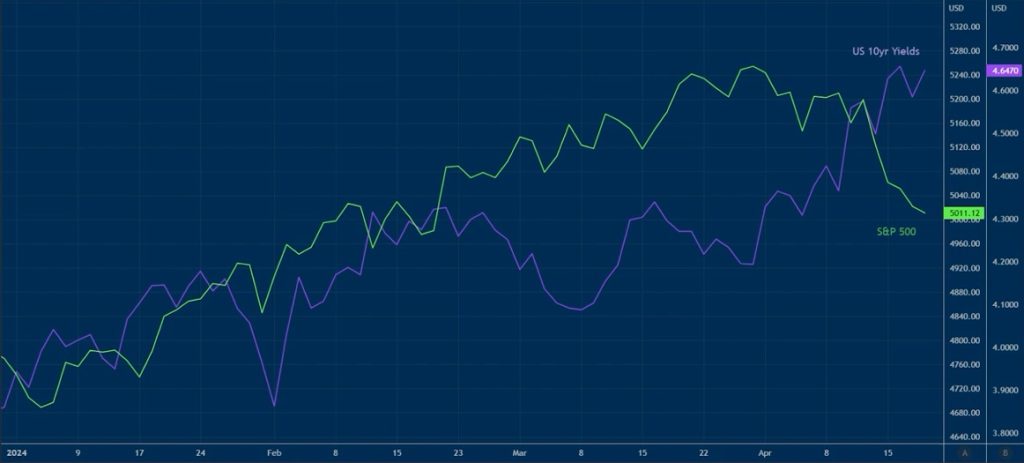
Early on, I argued that this outlook was overly optimistic, barring a recession or significant economic slowdown, which hasn’t materialized. Despite the ten-year rate climbing above 4.6%, the broader market’s resilience amidst this backdrop has been surprising.
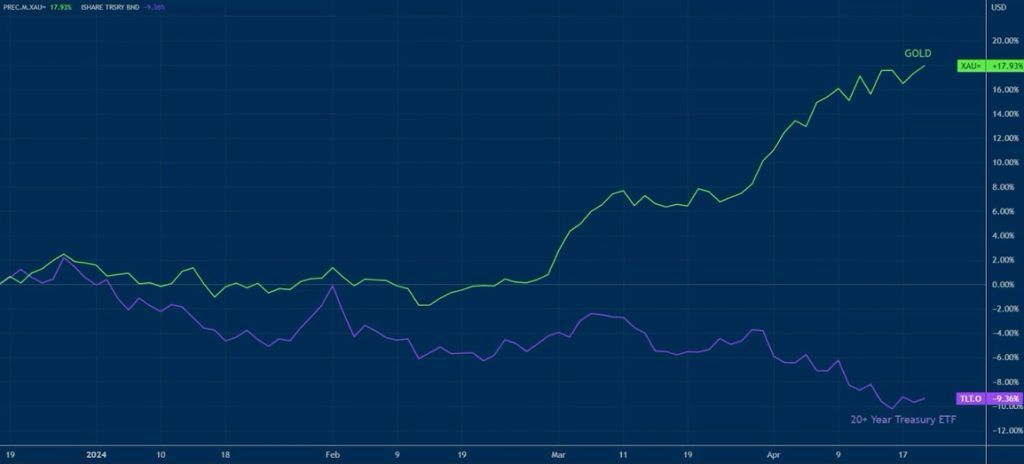
Traditionally, gold and bonds move together, but recently, they’ve diverged significantly, with gold rising around 20% while bonds fell approximately 10%. This stark deviation from historical norms raises questions about the underlying reasons.
The surge in risky assets like Bitcoin, housing, and semiconductor stocks indicates a risk-on sentiment, despite expectations of prolonged higher interest rates. This raises concerns about the disconnect between market behavior and prevailing economic narratives.
Looking ahead, I remain bullish on metals like copper and sectors such as energy and industrials. However, the breakdown of traditional correlations has prompted caution, as it could signal broader market shifts.
Even if my base case proves wrong and equities stagnate or decline, I aim to maintain a balanced portfolio to navigate potential risks. Sectors like big-cap tech, which drove returns in 2023, may not offer similar opportunities in 2024, with names lacking pricing power facing vulnerability.
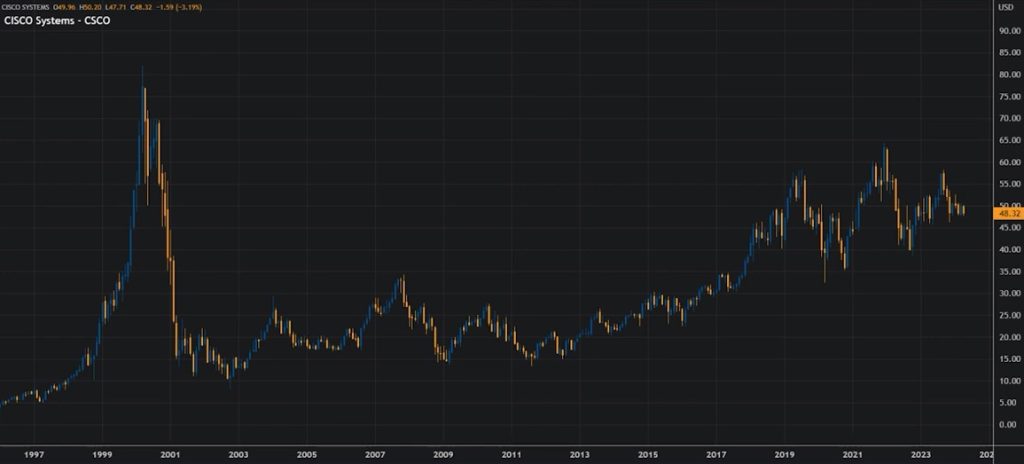
While I draw parallels between the current market environment and the tech bubble of 1999, I don’t foresee a similar crash due to differences in valuations. However, caution is warranted, especially with companies riding on inflated expectations without real substance.
In essence, I’m looking for companies with sustainable growth potential, akin to Cisco during the dot-com era. As markets evolve, focusing on fundamentals and avoiding speculative names is key to navigating uncertainty.
Cisco was a genuine company and still operates with a real business. However, it surged but eventually declined as people realized it wasn’t as crucial to the internet as believed. This realization led to a distinction between companies like Cisco and Amazon.
There were bound to be winners among companies, but if the market declines, speculative stocks like Nvidia could suffer. Even if this is just a correction, second-tier tech stocks may still lag.
If correlations continue to break, indicating a slowdown or recession, speculative stocks with weak fundamentals could plummet. For instance, Adobe’s stock is down 18% this year, signaling potential trouble despite outperforming the S&P previously.
Adobe’s attempts to present itself as a beneficiary of trends seem dubious. Their strategies resemble a counterfeit Rolex, lacking authenticity. Vague statements about monetizing AI raise suspicions of false claims.
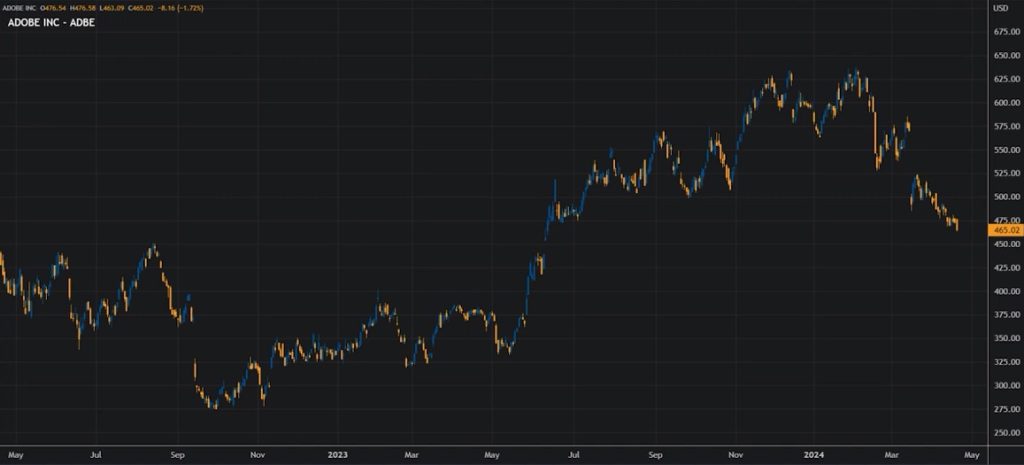
Considering their recent earnings call, Adobe’s future estimates may decline, leading to significant stock drops. If cracks in their business segment become more apparent after the upcoming earnings call in May, Adobe could face a substantial decline, possibly 20 to 30%.
Looking ahead, I’m considering a put spread strategy for stocks reporting post-June expiration, which could yield significant returns if the stock declines. Despite my cautious outlook, I remain attentive to market movements and may adjust my strategy accordingly.












